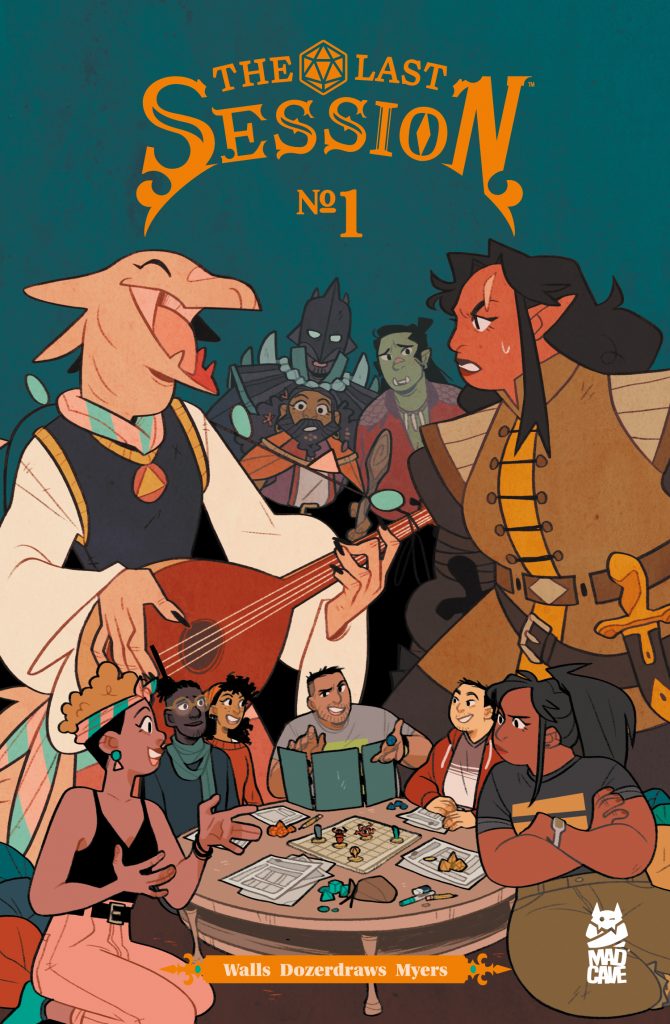
- The Last Session
- Mad Cave Studios
- Written by Jasmine Walls
- Art by Dozerdraws
- Letters by Micah Myers
- Edited by Michael Moccio
- Issue 1 available for pre-order, in stores December 1st, 2021
Five high school students meet up for a scheduled session for an LGBTQ+ group. When no one else shows up because the time happened to coincide with the school’s Anime Club, these five are left to their own devices. The time & the room are already set aside for them, so it’d be a shame to let it go to waste. One of the teens, Jay, comes to the rescue with an idea…
“Have any of you played Dice & Deathtraps before?”
And just like that, a circle of friends is born, brought together in the name of epic adventure through cooperative storytelling.
I don’t know how many out there have given the worlds of table top role-playing games (TTRPG) a try, but in recent years I’ve seen a bit of a surge. No longer played in shadows, hidden away in basements or locked behind closed doors as it was in the Dark Times (ie: the 1980’s) when I started playing, the role-playing game has finally found the light of day.
Those of you reading this who do play, whether you’ve been at it for years or just recently discovered it, you understand how friendships can become enmeshed in the shared experience. You catch yourself bouncing new character ideas off of each other, recounting story arcs past and present, and laughing about mishaps that never seem to get less funny over time (seriously, throw one dart at a 3rd edition skeleton and you never hear the end of it). It doesn’t matter who you are when you’re away from the Table, when you get together with your group all of the real-world dramas, the chaos, the disappointments… it all slips into the background in favor of the chaos and drama that you’ve created in the name of The Campaign.
That’s the kind of belonging that’s been tapped for The Last Session, coming soon from Mad Cave Studios.
Not to get too caught up in buzzwords that can get lost in a jumble of (mis)interpretation, Jasmine Walls has created a close-knit group of friends, all dealing with their own very real concerns of belonging and inclusion. But before you start crying “exclusion!”, this story has been crafted in such a way that it doesn’t exclude anyone- say, for instance, a boring middle-aged white guy- who may not have experienced any of the specific personal struggles that are highlighted in this comic. Walls gives no sense that The Last Session is being used as a platform, and there are no half-formed characters put in place to check off a box. These gamers- Lana, Drew, Shen, Walter, Jay, & Cassandra- come across as fully formed people discovering the shared secret that gamers all over the world have been in on for years (decades for some of us)….
Everyone is welcome at The Table.
Walls’s dialogue is sharp, often hilarious and very relatable. The characters are understandable for anyone who’s had to make a choice between real world responsibilities and the escapism afforded to anyone with a love of collaborative storytelling. The non-linear narrative is split into three interwoven parts: The past events of the group’s early days, the current events leading into their campaign’s “last session”, and the actual events as experienced in game by their characters. Walls’s approach uses each thread to lead the reader along, showing how events have unfolded over time, how each individual’s gaming experience has shaped them, and how the in-game characters reflect the players and their lives.
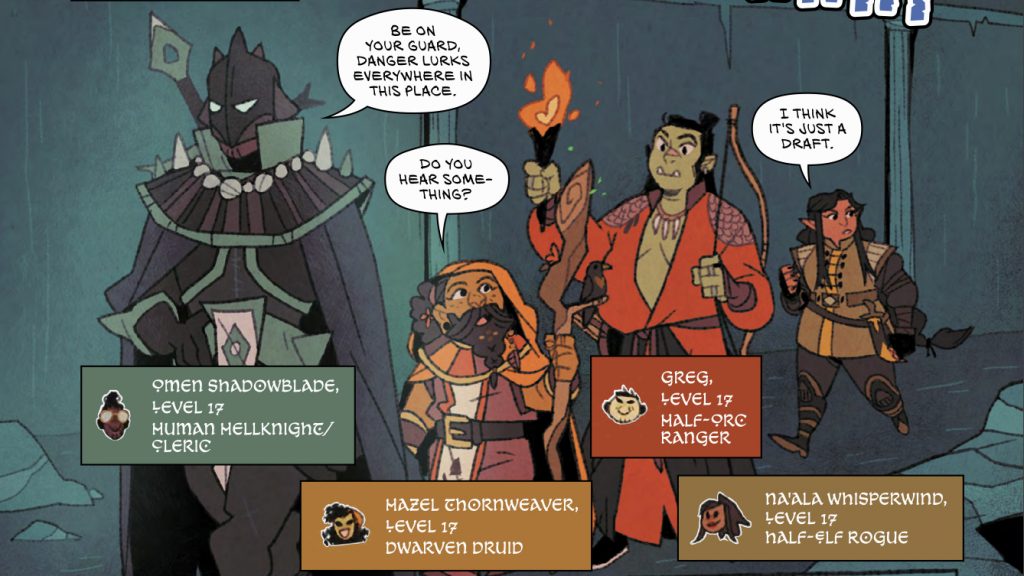
In the art department, Dozerdraws has taken steps to ensure that the story drafted by Walls is as well represented on the page as the characters themselves. The style used has a soft, fluid aspect to it, with no hard lines or sharp edges (except for the swords, daggers, and other pointy things). It’s not the kind the artistic approach that would be expected if The Last Session were just another fantasy adventure. As a story that focusses more on the interpersonal relationships of its characters, it’s one that I’ve been seeing more of these days. The designs used by Dozer (can I call you “Dozer”?) combined with the bright colors serve to keep things light. At no time did I doubt that it was all going to work out for these kids in the end, for them and their characters. On the subject of the in-game characters, Dozer does an outstanding job of making them identifiable with their real-world counterparts. While many gamers prefer not to play as someone who’s anything like them, in this case it worked to help the reader stay connected to the characters- both in and out of game- and to follow the various story arcs in motion.
Micah Myers has the unenviable job of lettering the book, a task that continues to be one of the most underappreciated pieces of the puzzle that is comic book creation. If you’re not really sure about what makes lettering good or bad, you’ve been lucky enough not to come across an example of really bad lettering. Myers keeps the dialogue flowing, and doesn’t let it interfere with Dozerdraws’ artwork. It might sound too obvious to be a thing, but in a comic that doesn’t have as many action sequences to fall back on, easy to follow dialogue is pretty major.
Readers looking for a Dungeons & Dragons inspired adventure are might not find the full satisfaction of a good crawl. It’s there, but it’s only a third of The Last Session. Readers looking for a story about how friendships are meant to grow & evolve, regardless of how firmly fixed a given circle might be, may find a lot to love here. Finally, readers interested in seeing how the simple act of inclusion (or conversely exclusion) will impact a social group can without a doubt spot some real-world parallels.
I enjoyed this book as a lifelong player of TTRPG who’s been with his current gaming group since D&D 3rd edition hit the shelves. The number of nods & Easter Eggs from that angle alone were enough to hook me into this latest offering from the folks at Mad Cave Studios.
Final Score: 11/13
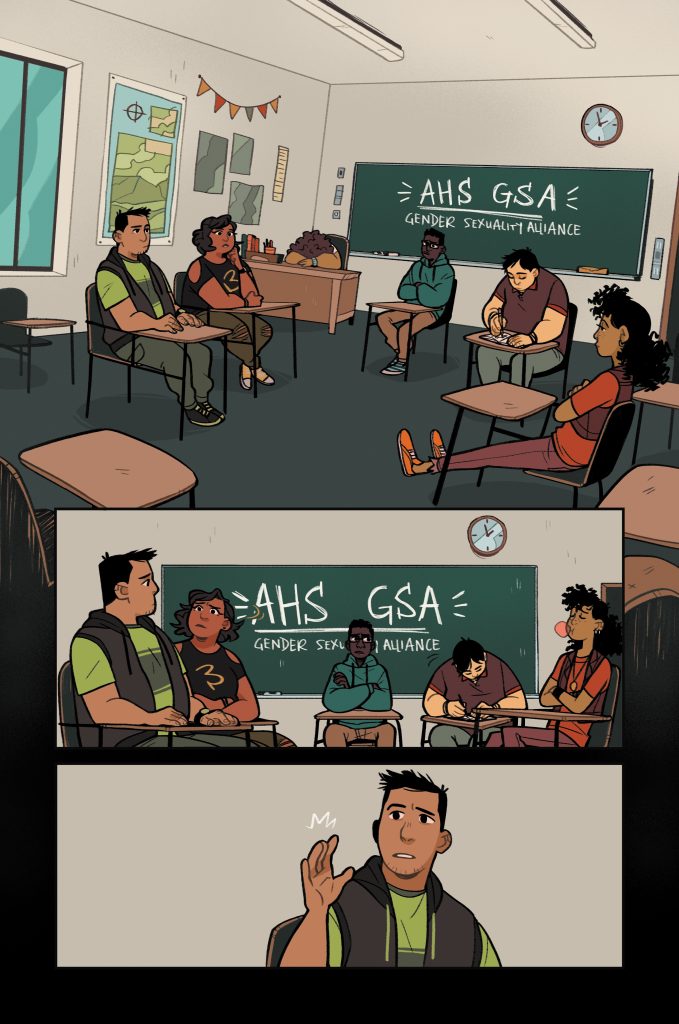
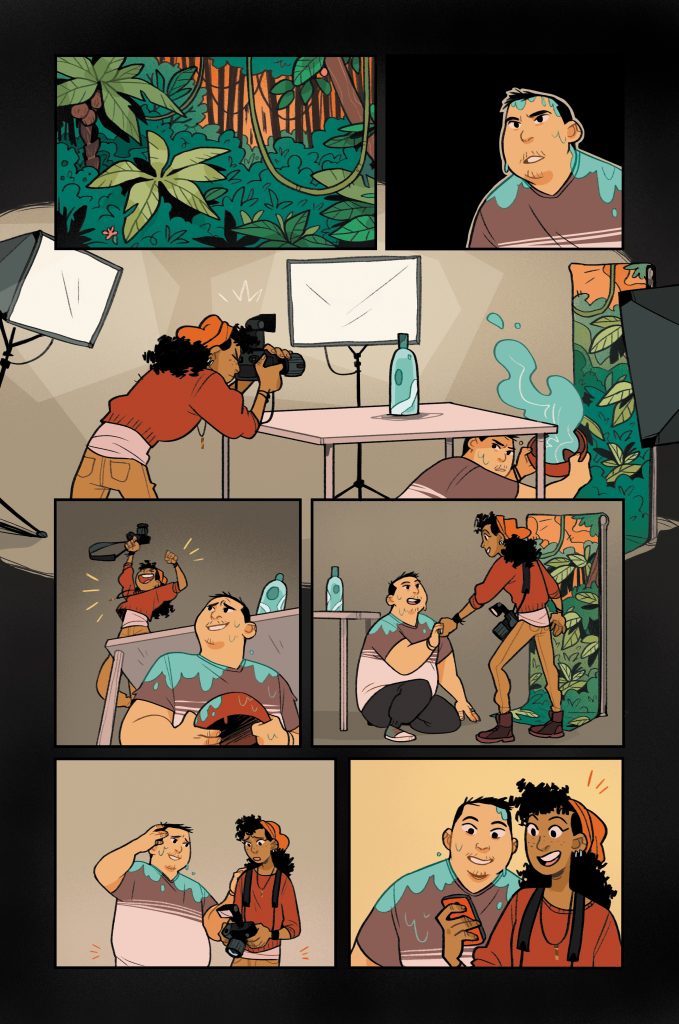
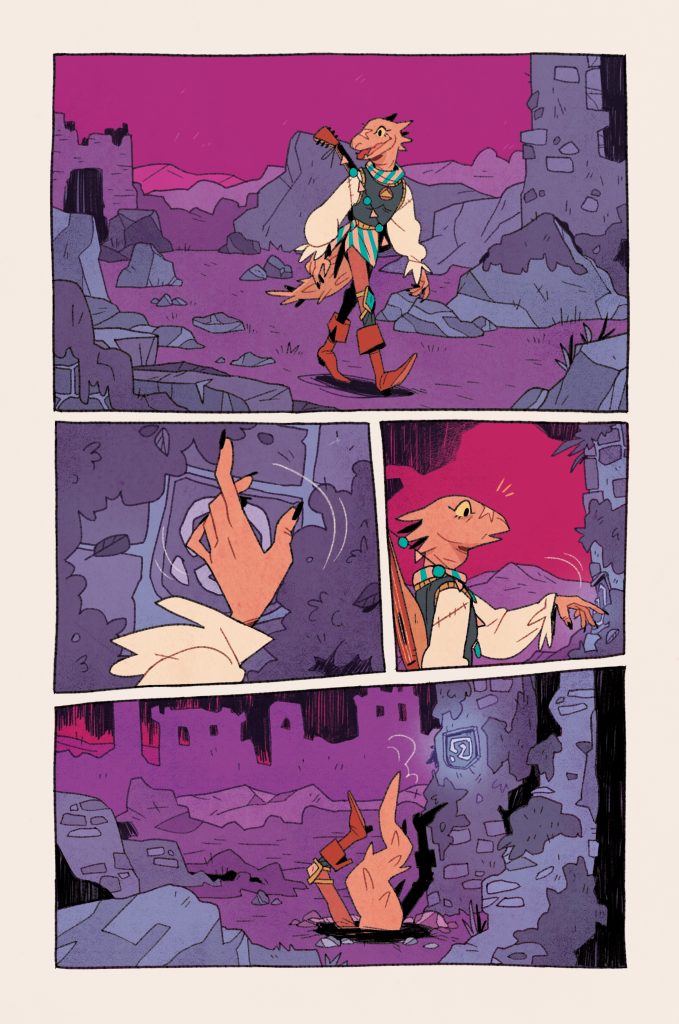
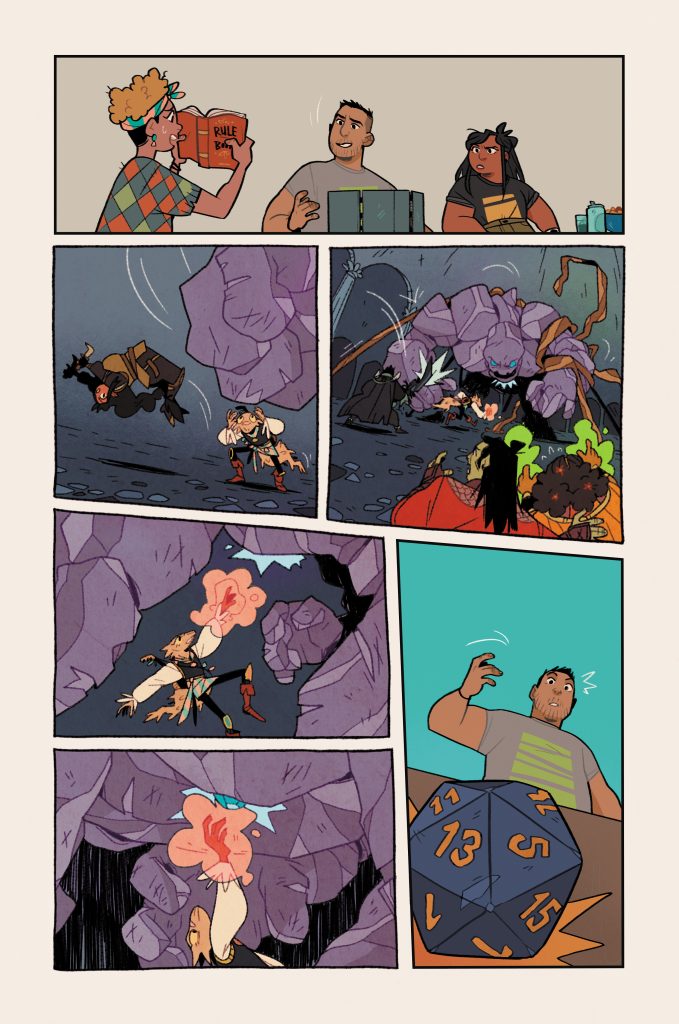
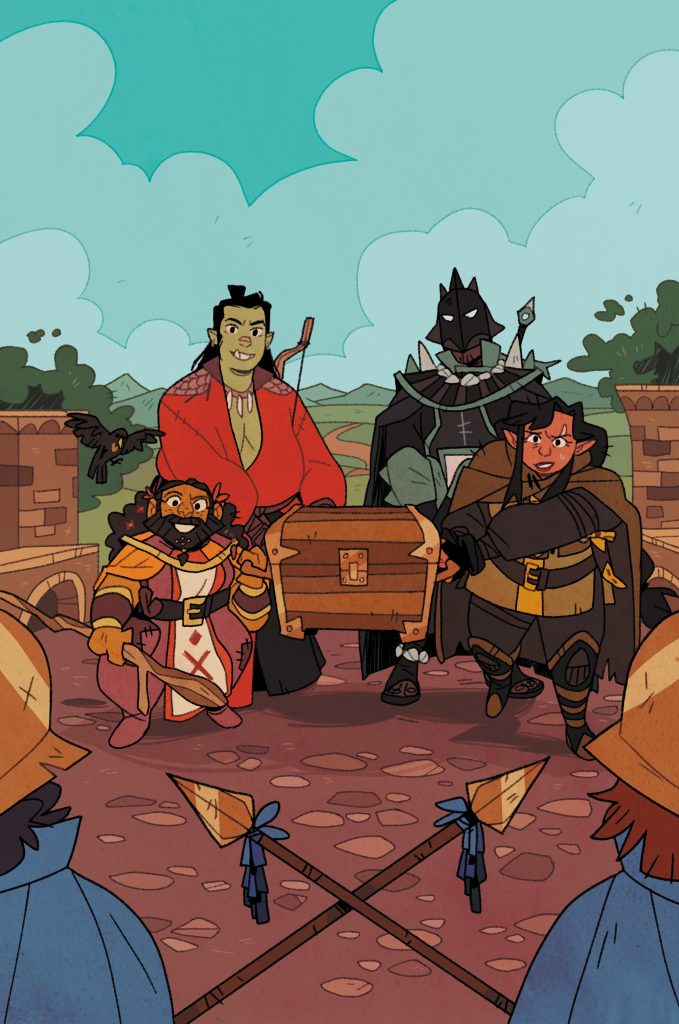
1 Comment
Add a Comment